Toyota Subsidiary Woven Acquires Lyft Autonomous Division
Toyota’s Woven Planet Holdings has acquired Level 5, Lyft’s self-driving unit. Woven Planet’s deal brings scientists, software engineers, and researchers together as one.
Elon Musk Takes Center Stage on Saturday Night Live
Billionaire Elon Musk will host “Saturday Night Live” on May 8th, the comedy series announced last week. Known for his controversial, biting remarks, the Tesla and SpaceX CEO apparently did not win over any fans among the cast. Cast members were not happy with Musk’s invitation. Social media comments indicated their displeasure.
2023 Cadillac Lyriq is Almost Here
Today the 2023 Cadillac Lyriq made its production debut. If this is the highlight of a century of innovation, what’s Cadillac been doing the rest of the time? Cadillac’s luxury electric SUV is starting a new era ahead of schedule. You can place your order in September for a 2022 first-half delivery.
Authorities Claim No One Was in the Driver's Seat in Tesla Crash
A crash involving a Tesla Model S in Texas killed two passengers.
We say “passengers” instead of “occupants” because it appears there was no one in the driver’s seat at the time of the crash.
Matchbox Moves Towards 100% Recycled Materials
Matchbox is headed towards 100 percent recycled, recyclable, or bio-based materials by 2030. Is this the end of die-cast cars as we know them?
Cruise AV Company Raises $2.75 Billion in Latest Funding Round
General Motors backed autonomous vehicle startup Cruise has reportedly scored $2.75 billion from its last round of funding, with Walmart again taking a particular interest in the company. The multinational retail corporation previously participated in a pilot program where Arizona-based shoppers could call upon a Cruise AV to have their groceries delivered. While just one of several autonomous programs Walmart is involved with, the relationship with Cruise must be in fairly good shape to throw that kind of money into a business that seems to have missed more deadlines than it has kept — even if that does seem to be the trend for AV startups.
Ford Introduces 'Hands-Free' BlueCruise System for F-150, Mach-E
On Wednesday, Ford Motor Co. announced its upcoming hands-free driver-assist system intended to rival Tesla’s Autopilot or General Motors SuperCruise. The service, which the manufacturer has renamed BlueCruise, will be available on top trimmed “Mustang” Mach-E crossovers and F-150 pickup trucks via over-the-air-updates in the third quarter of 2021.
It will not be free, however.
Even though Ford has promised highly competitive pricing, customers will need to have purchased vehicles equipped with the necessary hardware (including driver monitoring cameras) before they’ll be eligible to spend the additional $600 Ford is asking for the privilege of using BlueCruise for three years. While more affordable than the competition, it still seems a lot to spend on a vehicle so you can pretend it’s self-driving – especially since the company failed to make it sound like it would be any more advanced than what’s being offered on Tesla and Cadillac vehicles that similarly cannot drive themselves.
Domino's Delivers Pizzas Autonomously in Houston
Domino’s has launched autonomous pizza delivery in Houston, Texas this week. Customers can choose to have their meal delivered by Nuro’s R2 robot. Nuro has the first completely autonomous on-road delivery vehicle approved by the U.S. Department of Transportation.
Not Everyone in Arizona Is a Fan of Waymo's Self-Driving Vans
Waymo, the autonomous program backed by Google-parent Alphabet, seems to have upset some residents of Phoenix, Arizona, who have elected to whip eggs at the company’s test vehicles. Selected due to its lax regulatory standards, the state has become home base for Waymo to pioneer its self-driving vans since 2016. However, newly released police reports paint a picture where the locals are far less enthused with the vehicles’ progress than Waymo’s marketing materials would suggest.
A subset of Phoenix citizens has been demanding the firm improve transparency and offer better explanations for some of the higher-profile crashes since 2018. Despite Waymo assuring the public that mishaps are rare, local reports showed some erratic behavior among the test mules operating in 2020. While a few of these incidents made the news, local police reports from Chandler and Tempe (metropolitan Phoenix) indicate there was a slew of incidents we did not know about — many of which involved encounters with frustrated, human motorists.
The Week of Driving Autonomously in an Xpeng
XPeng, a Chinese maker of EVs, sent a fleet of XPeng P7s on a 2,284-mile, weeklong autonomous driving jaunt across six provinces, the longest by any mass-produced vehicles in the country.
Honda SENSES Hands-Off Driving in Japan
Honda has begun leasing Legend EX sedans with the Honda SENSING Elite safety system in Japan today. The first Level 3 automated technology to be approved in that country, the system includes Traffic Jam Pilot, Hands-Off, and Emergency Stop Assist functions.
What part of autonomous driving is this, being unveiled under the guise of advancing safety and an overarching theme of creating a collision-free society? Honda says Elite is the next generation of Honda SENSING, safety, and driver-assistive tech already available on Hondas worldwide.
Tesla Self-Driving and Unintended Acceleration Not The Same Says NHTSA
Tesla vehicles that drive themselves and those that continue unintentionally are not the same, according to the National Highway Traffic Safety Administration (NHTSA).
Tesla Full-Self Driving Option Comes Up Empty
Elon Musk said in a tweet, “All Tesla cars delivered in the final three days of the year will get three months of the Full Self-Driving option for free. Delivery & docs must be fully complete by midnight Dec 31st.”
2021 Mercedes-Benz Elevates S-Class Standards and Pricing
The all-new 2021 Mercedes-Benz S-Class, the flagship of the line, will arrive in US dealerships in the first half of 2021. Boosting greater comfort, safety, and the overall experience for driver and passengers, the S-Class embodies not only the brand’s flagship, but a 12.9 percent increase from the 2020 S 450 4Matic Sedan, to the 2021 S 500 4Matic Sedan’s starting price of $109,800.
Zoox Shows Off Robotaxi Prototype
Zoox, Amazon’s self-driving vehicle startup purchased over the summer, revealed a prototype robotaxi on Monday. The urban EV adheres to the familiar shuttle philosophy that has brought boxy mobility solutions to numerous towns around the globe. While these pilot programs have had mixed success at best, corporations see them as part of an on-demand future where everything is available by app.
Designed and manufactured in the United States, the Zoox vehicle is purpose-built for autonomy and offers bidirectional driving capabilities and four-wheel steering. However, we would be lying if we said the concept seemed terribly different from the earlier prototypes offered by May Mobility, Jaguar Land Rover, and over a dozen other companies that may not fit quite as neatly into the startup or legacy automaker pigeon holes.
Report: Hyundai Embracing Subscription-based Features, Buying Boston Dynamics
Following reports that Hyundai Motor Company managed to purchase American engineering and robotics firm Boston Dynamics from Japanese financial conglomerate SoftBank for a cool $921 million, we’ve learned that the South Korean automaker has also fallen into embracing on-demand features. The trend, which is sweeping through the automotive industry to our dismay, basically involves manufacturers hiding vehicle options behind a subscription paywall instead of just letting you purchase the options you wanted upfront.
That means tomorrow’s car shopper might find themselves buying a vehicle that’s already fully loaded from the factory only find themselves forced to unlock heated seats or an upgraded sound system via monthly payments. In our estimation, the whole concept is ludicrously wasteful, diminishes the private resale values of automobiles, and seems like the kind of corporate nonsense reserved for dystopian fiction novels.
GMC Plotting Super Cruise for Sierra Denali
On Wednesday, General Motors announced plans to launch a version of Super Cruise on the 2022 GMC Sierra Denali modified to work with trailers. The hands-free driver assistance system (GM can’t call it “autonomous” because it technically isn’t) will stop being exclusive to Cadillac products and branch out into premium offerings from GMC and Chevrolet’s Bolt EV.
While unavailable until late in 2021, the next round of vehicles to be equipped with Super Cruise is supposed to see continued improvements to the system that allow for greater coverage. When the system originally launched on the Cadillac CT6 sedan, it was only eligible for use on specific divided highways for safety reasons. The greater emphasis on avoiding accidents was appreciated but it made the system seem more like a flashy gimmick than something any serious person would use on the regular. But GM has taken great strides to make sure that didn’t remain the case — hence the new trailer capabilities and ever-widening operating area.
NHTSA Begins Regulatory Proceedings for Autonomous Safety, You Can Help
Safety regulators with the National Highway Traffic Safety Administration (NHTSA) said they were opening formal regulatory proceedings to establish new safety standards for autonomous vehicles on Thursday. However, before the NHTSA can get into proposing new rules that will influence how cars that can control themselves will be handled by the U.S. government, it wants citizens to offer their two cents.
We’re talking specifically about Levels 3-5 of automation as defined by SAE, meaning cars that could someday be sold without steering wheels or any other means to take control of the vehicle yourself. It’s something industrial lobbyists with the Alliance for Automotive Innovation (AAI) already have a roadmap for and plan on sharing with the NHTSA soon. Based on the group’s previous initiatives, we imagine it’ll be advocating the government leave as much control in the hands of manufacturers as possible. But you’ll have a limited window to weigh in on that position (or, better yet, share your own) while regulators have an open request for public comment.
Opinion: Roborace Crash Offers Sport Some Much Needed Excitement
Unaware that the inherent danger of motorsport is often what makes it popular (check the ratings for any series throughout history and count the number of driver fatalities if you’re in doubt) Roborace plans on becoming the first global championship for battery-driven autonomous cars programmed to run the course without help. Organizers are convinced that the sport will eventually yield compelling competition with teams using nothing more than their own coding acumen and self-driving hardware. Chassis and powertrains are shared between vehicles, making this a battle of real-time computing algorithms and artificial intelligence technologies.
It actually sounds kind of boring. But one of Roborace’s first live-broadcasted events opened with a bang after one of the cars pitched itself directly into a wall — suggesting organizers could still give the viewing public what it wants.
Ford's Autonomous Offensive Places Escape Hybrid on the Front Line
With Ford having discontinued the Fusion sedan to prioritize higher-margin models, the automaker will need to select a different unit as its preferred platform for self-driving test mules. It will need to choose wisely, too. According to the company, its fourth of generation autonomous test vehicles will foreshadow real-world commercial endeavors using the technology.
On Tuesday, Ford and Argo AI announced that it would be the Escape Hybrid carrying the torch of technology. Starting this month, models fresh from the factory will be modified with the “latest advancements in sensing and computing technology.” The crossover will then be exposed to the most rigorous testing regimen the automaker’s ongoing AV program can muster. From there, the Escape will serve as the architecture and platform Ford has decided will bring its autonomous vehicle service to life.
Euro NCAP Develops Assisted Driving Assessment, Bashes Autopilot
The European New Car Assessment Programme (Euro NCAP) has finished a study on driver assistance systems and issued some moderately surprising results. While nowhere near comprehensive enough to be the ultimate authority on self-driving cars, it did give us a taste of Europe’s new grading system and how it will be implemented as more vehicles are tested. For now, NCAP is focused on a handful of models ranging from the pedestrian Renault Clio to the much more expensive Mercedes-Benz GLE.
While one might expect the moral of the study to be roughly ‘you get what you pay for,’ the reality seemed much more complicated after the Tesla Model 3 ended up in sixth place out of a possible ten. Anybody who has ever used Tesla’s Autopilot will tell you it’s probably the most impressive advanced driving suite currently on sale. This author certainly would before the smile dissolved and he was forced to you that it (and other) driving assistance packages are horrible, misleading inventions that need to be gotten rid of as soon as possible.
Getting Into the Game: Amazon Purchases AV Startup Zoox for an Undisclosed Sum
Always eager to slash delivery costs — especially if the government opts to stop subsidizing the company via the U.S. Postal Service — Amazon has been getting chummy with EV startups. It’s also begun exploring new business opportunities in regard to food delivery and ride hailing, resulting in sizable investments into both sectors.
On Friday, Amazon announced it will acquire California-based Zoox to help it further those goals. Coming off a staffing reduction of about 10 percent to contend with the pandemic, the company is currently focused on delivering an symmetrical, self-driving, zero-emissions vehicle that can compete on the currently nonexistent robo-taxi market. While the world’s 13th largest company (by revenue) seems like it would make good use of the property to advance its autonomous delivery program, corporate messaging seems to indicate Amazon is more interested in Zoox’s expertise in people moving.
Study Says Autonomous Taxis Will Cost Users More Than Car Ownership
When Sir Thomas More coined the term “utopia,” he lifted two words from Ancient Greek that roughly translate into “not a place.” Turns out people from the 16th century still understood satire, perhaps better than we do today. After all, we are the ones operating under the assumption that we can remap society in order to build consequence-free transportation network without a shred of humor to keep us grounded.
We may not need satire in this instance, however. A new study published in the American Journal of Public Health asks questions about how just effectively the shift to autonomy will benefit society as a whole. Industry leaders have broadly framed the shift toward self-driving as kicking down the door to an idyllic universe where no one wants for transportation, with autonomous taxis serving as the first wave of this planned paradise. The reality may be vastly different that what’s being sold, however.
NHTSA Readies New Voluntary Autonomous Driving Database
The National Highway Traffic Safety Administration (NHTSA) plans to release new guidance for automakers to make autonomous testing data available to the public. As you are no doubt aware, the concept of self-driving cars is losing steam. The industry finds itself confronting hurdles it never could have anticipated, slowing progress, while high-profile mishaps have shaken the public’s faith.
While polling has hardly been consistent (and often conducted by actors who frame the questions to get a desired answer), reputable outlets have shown us that public acceptance of self-driving cars declined over the past few years. The NHTSA would like to offset this by allowing regular folks to more easily track the industry’s progress, while encouraging a bit of competition among companies as they compare themselves to each other in a new database.
IIHS Denounces Concept of Total Safety From Autonomous Cars
When the United States began passing legislation allowing automakers to begin testing self-driving vehicles on public roads, it was framed almost entirely as a safety issue. Proponents claimed that the only way to eliminate roadway fatalities was to take the human brain out of the equation and let cars drive themselves. Having enacted a similar no-thinking policy themselves, legislators agreed — pleased to have ensured a death-free future on little more than empty corporate promises.
At the time, we were still complaining about the unreliable nature of advanced driving aids, and how such systems seem custom-made to dull your reflexes behind the wheel. There was a sense that, if everything went perfectly, maybe autonomous vehicles (AVs) could reduce accidents by previously unheard of levels. That feeling didn’t last particularly long here at TTAC and, by 2018, we started noticing we weren’t alone.
The Insurance Institute for Highway Safety (IIHS) grew increasingly critical of AVs starting a couple of years ago. On Thursday, it released a report claiming the idea of a no-crash future spurred by automation is a fantasy. Instead, the IIHS says cutting-edge technology will likely struggle to stop just a third of all accidents.
Annoy the Driver: IIHS Offers Its Two Cents on Improving Self-Driving Safety
The Insurance Institute for Highway Safety (IIHS) has issued a set of guidelines for advanced driving aids, suggesting that the key to automated safety is making sure drivers are perpetually engaged with the vehicle’s operations. Unfortunately, this has turned out to be a Catch-22 scenario due to the way these systems function. Semi-autonomous features are supposed to be there to help promote safety by adding an extra layer of protection; however, many encourage motorists to disengage by nature of their design.
Adaptive cruise control with lane keeping is probably the worst offender. Implemented as a way to keep cars a safe distance apart on the expressway, it offers an experience that borders on having the car chauffeur you around. The effectiveness of these systems vary widely, with none actually being capable of any legitimate self-driving functionality. You’re also not supposed to be able to tune out while they’re in use, but they all seem coyly contrived to do exactly that. The IIHS is concerned this phenomenon will only get worse as driving aids evolve and become increasingly commonplace.
“Unfortunately, the more sophisticated and reliable automation becomes, the more difficult it is for drivers to stay focused on what the vehicle is doing,” said IIHS President David Harkey. “That’s why systems should be designed to keep drivers actively engaged.”
NTSB: Autonomous Uber Vehicles Crashed 37 Times Before Fatal Accident
The National Transportation Safety Board (NTSB) has disclosed Uber’s autonomous test fleet was involved in 37 crashes over the 18-month period leading up to last year’s fatal accident in Tempe, AZ. Having collected more data than ever, the board plans to meet on November 19th to determine the probable cause and address ongoing safety concerns regarding self-driving vehicles.
Reuters reports that the NTSB plans to issue comprehensive safety recommendations to the industry, as well demand oversight from governmental regulators, in the near future.
Unfortunately, the circumstances surrounding the fatal incident in Arizona are as unique as they are complicated — ditto for most other crashes involving AVs. While Uber’s test mule failed to identify the pedestrian in time, leading to her death, she was also walking her bicycle on a particularly awkward stretch of road. “The system design did not include a consideration for jaywalking pedestrians,” the NTSB said.
SAE Consumer Autonomous Driving Study Finds… Public Acceptance?
With the realities of autonomous driving growing increasingly apparent, the Society of Automobile Engineers (SAE) decided to conduct a survey to gauge public sentiment surrounding the technology. We’ve seen these studies before, noticing a lack of consistency. While several high-profile accidents relating to autonomous (or semi-autonomous) systems have clearly shaken people’s confidence over the last two years, we’re still seeing conflicting reports — and we don’t mean minor discrepancies, either.
The SAE survey, published on Tuesday, stated that 76 percent of respondents “think a self-driving car experience is similar or superior to a human-driven experience.” However, the American Automobile Association (AAA) released a study in March claiming 71 percent of survey respondents still had serious concerns with the technology, with only 19 percent claiming they’d even consider putting a loved one in a self-driving vehicle.
That’s a complete turn-around in just over six months. Perhaps we should look at how these surveys are being conducted and the type of questions being asked, because taking the SAE Demo Days Survey at face value makes it seem as though automated driving has finally gained public acceptance.
Apple Co-founder Claims Autonomous Cars Aren't Happening
Apple co-founder Steve Wozniak has officially given up on autonomous vehicles, despite previously being a major proponent of their advancement. “I stepped way back [on] this idea of Level 5. I’ve really given up,” Wozniak at last week’s J.D. Power Auto Revolution conference in Las Vegas. “I don’t even know if that will happen in my lifetime.”
Automotive News reported the quote on Monday, noting that Steve’s tune has changed dramatically from the days where he optimistically saw Apple blazing the trail for advanced driving technologies — something that requires one to venture several years into the past. He’s been harder on the systems more recently, openly expressing his growing doubts since 2017.
“What we’ve done is we’ve misled the public into thinking this car is going to be like a human brain to be able to really figure out new things and say, ‘Here’s something I hadn’t seen before, but I know what’s going on here, and here’s how I should handle it,'” Wozniak explained. “A human can do that.”
Automakers Asks NHTSA to Remove Autonomous Hurdles
The National Highway Traffic Safety Administration has been pretty good about letting companies test autonomous vehicles on public roads. And yet pretty much every automotive manufacturer, ride sharing firm and tech giant still wants laxer rules. To a degree, it’s understandable. Take General Motors, for example. Back in 2017, GM sought exemptions from NHTSA to deploy fully automated vehicles without steering wheels or pedals, but that would have placed the car in clear violation of preexisting safety standards — as they were not in line with the General’s vision of what a self-driving car should be.
GM’s autonomous division recently said the self-driving Cruise AV it had been prepping for the end of this year will likely have to be delayed. While development issues assuredly played a role in stalling the car’s commercial deployment, it could never have launched as initially designed anyway.
Earlier this year, the Federal Motor Carrier Safety Administration (FMCSA) and NHTSA asked for input regarding the testing of automated vehicles to help decide if the “removal of unnecessary regulatory barriers” would be a prudent move. You can probably guess the feedback received from the automotive and tech industries.
Another Study Shows Consumers Hesitant to Embrace Mobility
With automakers investing heavily into the development of electrified and autonomous vehicles, it might seem there is a gigantic consumer base ready and raring to go out and buy them. But every study we’ve encountered suggests the exact opposite. Electric cars are still limited to tech fetishists with regular folks occasionally deciding to become early adopters. Meanwhile, AVs are still in their infancy with engineers keen to document every baby step they take as the public remains ill-informed on their overall status.
It was presumed, however, that this would change as development progressed and “mobility” became more mainstream. But a new study from J.D. Power, backed by Survey Monkey, has showed — once again — this is not yet the case. Based on a 100-point scale, the duo’s 2019 Mobility Confidence Index yielded a score of 36 for self-driving vehicles and 55 for battery-electric vehicles.
Attention Automakers: Ajit Pai is Not Your Friend
Two decades ago, the Federal Communications Commission decided to allocate a portion of the radio frequency spectrum for Dedicated Short Range Communications ( DSRC). The plan was to utilize that slice of the airwaves for ultra-modern automotive technologies relating to vehicle-to-vehicle and/or vehicle-to-infrastructure communications. Unfortunately, there hasn’t been a whole lot of activity on those channels.
The automotive industry was concerned it might need dedicated frequencies for use in autonomous-vehicle applications or some, yet unknown, technological advancement. But cable companies are annoyed that it’s being “wasted” and have started to antsy. They’ve asked the FCC to revoke carmakers’ exclusive rights to the frequencies and reallocate the majority of the 5.9-GHz band to the Wi-Fi systems that currently carry internet traffic for cable customers.
Hoping to encourage the commission to see things its way, Ford took FCC Chairman Ajit Pai out for a ride in an extra-special F-150 to plead its case. However, I feel like I can already predict whose side he’s going to take on this issue… and it isn’t going to be the automakers’.
It's My First Day: Self-driving Mobility Shuttle Pulled Over in Rhode Island
Self-driving shuttle company May Mobility expanded its operations to include Rhode Island this week. The state agreed to pay the firm $800,000 for the first year of operations, allowing it to get its six-passenger micro shuttles running between an Amtrak station and downtown Providence as part of an ongoing pilot program.
However, one of the shuttles was pulled over just hours after entering service for a rather baffling reason.
Trump's No Fan of Autonomous Vehicles, Like Most Other People
Donald Trump apparently belongs to the 71 percent of Americans who remain averse to the thought of riding in self-driving cars. It’s a position that appears to be incongruous with the National Highway Traffic Safety Administration’s deregulation strategy. But there’s always a little room for someone’s personal preference to exist in tandem with public policy. At least, there used to be.
Considering the president’s involvement in American industrial matters routinely make him the central focus of auto-related topics, we’ll keep this one relatively brief. But the accompanying details of this story are too interesting to simply ignore.
How Is Apple's Autonomous Vehicle Program Doing, You Ask?
Back in 2015, it was rumored that Apple was sinking significant resources and manpower into an electric vehicle program that also incorporated autonomous driving. But updates on “Project Titan” have been infrequent. Apple takes pains to keep its self-driving program under wraps.
There are, however, ways to track its progress. Since Apple tests its vehicles in California, it must submit an annual report to the state’s Department of Motor Vehicles outlining how many times human safety drivers retake control or interfere with the vehicle’s self-driving systems, as well as a tally of total miles driven.
Based on this metric alone, Waymo appears to be the industry leader, with “disengagements” occuring every 11,000 miles. General Motors’ Cruise came in second with roughly 5,200 miles between periods of human intervention. But what about Apple? Apparently, the firm is facing some rather strong headwinds. The company claims a human had to retake control every 1.1 miles.
California Gives Ford's Argo AI Green Light to Test AVs
Argo AI, the Pittsburgh-based firm Ford pumped $1 billion into and handed responsibility for educating its self-driving vehicles, just received a go-ahead for testing in the State of California. The company gained a testing permit from the California Department of Motor Vehicles on Tuesday, making its autonomous trials perfectly legal on public roads.
Ford’s current trajectory has its autonomous vehicles entering the commercial market by 2021. That’s two years after General Motors promised to do the same. However, recent events cast doubt over whether GM will be able to meet its self-imposed deadlines (some of which dictate future investments from its partners) and start mass production of computer-controlled cars by the end of this year. It’s not just GM that’s having trouble, either. A critical look into autonomous development shows many companies are struggling with advancing the technology to a point that would make it commercially viable.
The Blue Oval might be better positioned in the autonomous race than initially presumed.
Waymo Promises New Auto Jobs in Michigan
Alphabet’s self-driving arm, Waymo, announced plans for a Michigan expansion on Tuesday. The company is currently seeking a location in the southeast section of the state and intends to hire up to 400 employees over the next five years.
According to a corporate blog post, the new new hires will be tasked with installing autonomous driving systems on vehicles built by Fiat Chrysler Automobiles and Jaguar Land Rover ahead of those vehicles entering the firm’s growing fleet.
“We’ll be looking for engineers, operations experts, and fleet coordinators to join our team and help assemble and deploy our self-driving cars,” the blog explains. “This will be the world’s first factory [100-percent] dedicated to the mass production of [Level 4] autonomous vehicles.”
House Has a New Plan to Pass Self-driving Bill in 2019
Frustrated with House Democrats’ inability to push through legislation on autonomous vehicle development and testing, Rep. Debbie Dingell (D-MI) believes the new Congress needs to reassess the situation and rally together behind a tweaked proposal Senate Republicans are still willing to back.
Dingell claimed Rep. Frank Pallone (D-NJ), who will chair the Energy & Commerce Committee when Democrats take control of the House, and Rep. Bob Latta, (R-OH), who currently heads the digital commerce subcommittee, have agreed the smartest plan is to build consensus in the Senate so both chambers can deliberate on the same bill — potentially getting something done in the process.
Guns, Drunks, and Rage: Waymo Self-driving Vans Targeted by Angry Arizonians
Waymo began testing its self-driving Chrysler Pacifica minivans in the Phoenix-area city of Chandler, Arizona two years ago, and the local populace hasn’t left them alone since.
A report in the Arizona Republic describes a multitude of incidents where citizens, apparently enraged by the sight of the Waymo vans, decided to threaten and attack their autonomous invaders. Unbeknownst to many of them, the vans were recording their every move.
Work in Progress: Waymo Van Stakeout Reveals the Challenges of Self-driving Tech
The self-driving Chrysler Pacifica vans operated by Alphabet-owned Waymo didn’t know they were under surveillance, but indeed they were. Reporters from the Arizona Republic were on their tail, watching as the autonomous vans — safety driver behind the wheel — tooled around the streets of the Phoenix, Arizona metro area for a period in October. In total, the rolling stakeout covered 170 miles of sun-drenched roadway.
Earlier this week, Waymo announced it had become the first company to offer a commercial ride-hailing service (“Waymo One”) using autonomous vehicles, even though there’s still a live human being behind the wheel. That employee’s job is to monitor the vehicle and take over if needed, as self-driving tech is still in its early days. There’s bugs to be worked out.
What the newspaper’s surveillance showed was that vehicles operating “by the book” — ie, with a strict adherence to the rules of the road and an abundance of caution — sometimes don’t mix well with humans. Go figure.
Michigan Testing Shows Fairly Innocuous Weather Baffles Self-driving Car Systems
Successfully operating self-driving cars on crowded, complex roadways in sunny, dry locales like Phoenix, Arizona is already enough of a challenge, but researchers in the cold, tempestuous climes of Michigan have revealed what the latest and greatest autonomous technology is really up against.
Rain, sometimes hard rain. But also light rain. Also: cold temperatures, and trees with leaves that fall off in the winter. Given that so few places in the world boast such extreme weather and vegetation anomalies as Michigan, this won’t pose a problem for the widespread proliferation of driverless cars, will it?
Apple Co-Founder Claims Self-driving Isn't Realistic, Sick of Lies
Apple co-founder Steve Wozniak may no longer work for the company in any official capacity, but he has stayed on as a tech advisor and sounding board. When the Woz says something it usually isn’t without merit, which is why it was interesting to learn he thinks self-driving vehicles aren’t going to happen.
Previously, Apple was said to have hundreds of employees working on an electrified, autonomous vehicle as part of Project Titan. Despite having the necessary testing permits, the company shifted toward developing software for self-driving applications in 2016. CEO Tim Cook confirmed that was the firm’s new focus in 2017 but analysts and industry insiders have continued to claim the Apple Car is still quietly in development. Maybe someone should tell that to Wozniak because he seems to think the entire idea is bogus.
Ford Cautious but Optimistic Ahead of Key Volkswagen Meeting
Volkswagen’s supervisory board meets Friday to discuss how to handle the next decade of vehicle development, with CEO Herbert Diess expected to present a strategy that includes Ford as a key partner. The two automakers already have a Memorandum of Understanding with an eye on commercial vehicles, but VW could take the relationship further. Much further.
Ford’s Jim Hackett admits the talks are going well, but the CEO isn’t about to leap into bed without taking precautions.
Pilotless Pacifica Rides for Paying Customers Are Just a Month Away: Report
Waymo expects to quietly rolls out a commercial, autonomous ride-hailing service early next month, a new report claims, making it the first such service to open itself up to paying customers.
The company, a subsidiary of Google parent Alphabet, has tested a fleet of driverless Chrysler Pacifica Hybrids in Arizona for some time, recently bringing a group of non-paying riders on board for free test trips in the Phoenix area. Now, it’s time for the real show to start, albeit slowly.
Volkswagen and Ford Move Closer to an Agreement on Autonomy, Electrification, Assembly
Volkswagen AG and Ford Motor Co. continue to become more chummy with each passing day. They may even be on the cusp of sittin’ in a tree, K-I-S-S-I-N-G.
After signing a Memorandum of Understanding in June, executives are now hinting at widespread collaboration. Ford wants help in Europe and Latin America, areas awash in a sea of red. Volkswagen wants a piece of Ford’s self-driving technology, while the pair would work together on electric vehicles, according to recent reports. It’s worth noting that Ford, which has proven more open in discussing the matter, previously said nothing would be off the table if the two joined forces.
The most recent update concerns VW’s proposed investment in Ford’s self-driving partner, Argo AI. While both companies are dead set on a future of “electro mobility,” both fall short in critical areas.
Waymo Spins Tragedy Into Triumph for Autonomous Vehicles
Last month, a motorcyclist was injured by one of Waymo’s self-driving Chrysler Pacificas. According to the accident report, a car in the left lane attempted to merge into the same middle lane as the Pacifica test platform, which was operating in autonomous mode. The safety driver then “took manual control of the Pacifica out of an abundance of caution, disengaged from self-driving mode, and began changing lanes into [the outside lane].”
Considering the AV wasn’t traveling above 25 mph, it’s a little curious the driver took evasive action, unless the second car attempted to merge directly into it. Regardless, the Pacifica’s lane change placed it into direct contact with a motorcycle that was moving slightly faster. Waymo said that, had the autonomous system been left in play, the vehicle would have assuredly avoided the accident.
Uber Eager to Restart Autonomous Testing, This Time With Two Safety Drivers
Are two safety drivers better than one when it comes to the testing of self-driving cars? Uber Technologies feels it is, declaring as much to Pennsylvania’s road regulator. The company has filed an application with the state’s department of transportation to resume testing of autonomous Volvos, eight months after a fatal collision with a pedestrian on a darkened Arizona highway.
Uber stopped all autonomous testing in the wake of the March 18th collision, with the Arizona program dismantled for good. In Pittsburgh, the company hopes to show it learned from the safety lapses revealed in the accident investigation. These Volvos now have two fail-safes on board. Is it enough to restore the public’s trust?
Volkswagen Might Put Audi on the Back Burner, Spend More Time With Ford: Report
According to sources who spoke to Reuters, Volkswagen Group has more interest in pursuing technological relationships with new partners, especially Ford, than continuing on with Audi as its main development hub. At least for a while.
VW CEO Herbert Diess will reportedly unveil a 10-year plan to his company’s board later this month, part of an efficiency initiative born of diesel fines and the need to stay ahead of rivals. While the move would lessen Audi’s importance in the group, VW would stand to save big on R&D costs. Meanwhile, Ford might get access to VW’s electric vehicle architecture.
Midterm Elections Add Ticking Clock Element to Congress' Self-Driving Car Bill
It looks like Congress’ new self-driving bill might have to wait until a new batch of unmentionables plant their collective rear ends in the seats populating Capitol Hill. Already passed in the House, the SELF DRIVE Act has managed to garner bipartisan support — a true miracle in these troubled times.
However, it’ll have to spread wings if it wants to be signed into law before year’s end. The midterm elections could stymie everything and force Congress to start all over again. A likely prospect, considering the Senate is still going over the bill.
“This entire process has been an incredible feat of bipartisanship,” Greg Rogers, director of government affairs at Securing America’s Future Energy, told Bloomberg. “Attempting to recreate a bill that’s this ambitious and this significant would be like trying to catch lightning in a bottle all over again.”
Global Survey Reveals Who We'd Prefer to Sacrifice on the Bumper of a Self-driving Car
In 2014, as publications and automakers began making greater noise about autonomous vehicles, researchers at MIT’s Media Lab issued some questions to the public. The institute’s Moral Machines experiment offered up a series of scenarios in which a self-driving car that has lost its brakes has to hit one of two targets, then asked the respondents which of the two targets they’d prefer to see the car hit.
Four years later, the results are in. If our future vehicles are to drive themselves, they’ll need to have moral choices programmed into their AI-controlled accident avoidance systems. And now we know exactly who the public would like to see fall under the wheels of these cars.
However, there’s a problem: agreement on who to sacrifice differs greatly from country to country.
More Evidence That Self-driving Cars Are on a Road to Nowhere
We’ve been critical that self-driving systems are, ahem, “oversold” by automakers and tech firms hoping to boost their stock valuations. That doesn’t mean autonomous vehicles won’t happen, just that the timeline is probably a lot longer than the public has been led to believe. Still, it makes sense to pursue AVs. The first company to achieve legitimate self-driving will blow the hinges off a door leading to an array of new business opportunities.
General Motors, long considered a frontrunner in the autonomous race, is apparently in desperate need of a second wind. Its Cruise self-driving unit is said to be woefully behind in its attempt to bring an autonomous vehicle to the commercial market by 2019. Some GM staffers have confessed that the current system isn’t even capable of identifying whether objects are in motion or not — which seems like an important distinction for a computer-controlled automobile to be able to make.
Tesla Places Pointless 'Self-Driving' Option On Hiatus
Tesla Motors is abandoning the “fully self-driving” purchasing option on all of its vehicles. The option debuted in 2016 as a way to ensure your new car would be future-proofed and able to incorporate autonomous features. But those upgrades never really came — leaving customers who spent $8,000 angry enough to file a class-action lawsuit against the company for failing to deliver on its promises. At least they still got those EV tax credits and free access to the company’s fancy new Autopilot chip (which is also a bit of a mystery item).
The option appears to have been removed from Tesla’s website this week — prompting customers to ask CEO Elon Musk what was up after he announced a rejiggering of the Model 3 lineup. According to a tweet from Musk, the self-driving option was removed because it “was causing too much confusion.”
Well, whose fucking fault was that?
Feds Abandoning 10 Self-driving Test Sites, Sticking With Voluntary Regulation
With Honda and General Motors teaming up on a self-driving car and GM’s Super Cruise getting the green light from Consumer Reports, it’s already been a busy week for automotive autonomy — and it’s only getting busier.
The U.S. Transportation Department plans to repudiate 10 locations previously outlined by the previous administration to serve as federally recognized proving grounds for self-driving vehicle tech. But don’t think for a second that this means the noose is tightening around the neck of autonomous testing. The Trump administration is preparing a new initiative that will lead to nationwide testing from just about anyone who can cobble together a vehicle with advanced driving aids.
Toyota's Self-driving Car Plan Still Incorporates the Driver, Calls Bullshit on Level 5 Autonomy
Despite being one of the largest manufacturing giants currently in existence, Toyota is trailing in the autonomous technology war currently raging among carmakers. But it would unfair to say that the Japanese brand is losing. While General Motors appears to lead the rest of the established automotive firms, it’s not perfectly clear how big a gap it made for itself. Meanwhile, Toyota spent the last few years taking a more cautious approach, without ever ignoring the possibility of an autonomous future.
In 2015, the automaker decided to get serious, saying it would invest billions of dollars into the Toyota Research Institute. The goal? To advance robotics and artificial intelligence to a level where it could test an autonomous vehicle by 2020. But Toyota remains skeptical of the rest of the industry’s progress on self-driving cars.
“I need to make it perfectly clear, it’s a wonderful, wonderful goal,” Gill Pratt, the CEO of the Toyota Research Institute said at CES 2017. “But none of us in the automobile or IT industries are close to achieving true Level 5 autonomy, we are not even close.”
The Vision INext is BMW's Crystal Ball, Slated for Production in 2021
BMW has showcased the new flagship SUV for the electric i brand. Called the Vision iNext, the vehicle’s aim is to make customers appreciate what’s on the inside — which is important when you’re moving into mobility and out of driving. BMW claims that the model represents the union of vehicular autonomy, connectivity, electrification, and services. It also represents the end of the car as we currently know it.
Don’t confuse the iNext as the death knell of motoring, though. This remains a concept car, not something that you’ll see appearing in your neighbor’s garage in the coming months. Despite promising a production model in 2021, this is still a conceptual exercise — BMW’s attempt at building a crystal ball that allows it to peer into the future. While we’re not going to argue the validity of clairvoyance or scrying, we will suggest that the utility vehicle is probably a more useful forecasting tool than a glass orb and a gut feeling.
VW Seeking Industry Alliance for Self-driving Cars, Legal Protection for When They Crash
Volkswagen Group is interested in teaming up with other automakers to establish a new industry standard for self-driving technology. While the move would likely help streamline development, VW’s primary concern seems to be legal protection in the event an autonomous vehicle makes a mistake.
The idea of an automaker preparing itself to better cope with the legal ramifications of accidentally killing one of its customers isn’t particularly encouraging, but it’s at least understandable.
Tesla's Latest Update Killed Some Vehicles' Autopilot
Tesla’s latest over-the-air update appears to have caused at least a few drivers to lose all Autopilot functionality. While the vehicles seem otherwise intact, the semi-autonomous driving mode that was supposed to be improved by the latest firmware installation ended up a little buggy. That’s unfortunate for Tesla — a company that could do without additional bad publicity.
Luckily, minor software issues are exactly that — minor. This isn’t on the same scale as Tesla’s CEO promising to go public or pretending to smoke weed online. It isn’t even as big of a deal as the company losing another high-ranking executive, which also happened this week.
Mercedes-Benz's Hideous New Mobility Concept Isn't All That New
On Monday, Mercedes-Benz unveiled the Vision URBANETIC (styled in all caps by the manufacturer) — an all-electric, autonomous nightmare the company claims “answers the questions of future urban mobility.”
The modular design is as versatile as it is ugly. But it’s an important example of the direction automakers are collectively heading. Despite autonomous vehicles being oversold by manufacturers for years, we’re finally reaching a point where they feel comfortable enough to monetize them. Mercedes thinks the Urbanetic will prove revolutionary in redefining our roads. Still, it’s not the newest idea, despite Daimler calling it a “groundbreaking concept.”
AV and EV Collide, Revealing Apple's Self-driving Car Program in Action
Accident reports sometimes reveal more than just who was at fault. A rear-end collision in Sunnyvale, California, last week was truly a product of our modern age — an electric car slamming into the back of what would have been a human-operated crossover, were it not owned by Apple.
While the iPhone maker abandoned its Project Titan self-driving car project in 2016, it didn’t leave the autonomous vehicle field altogether. The August 24th collision shows it.




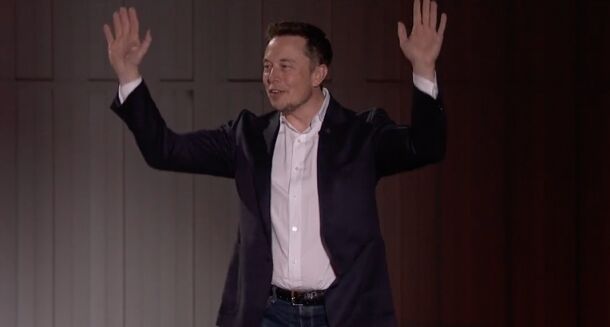

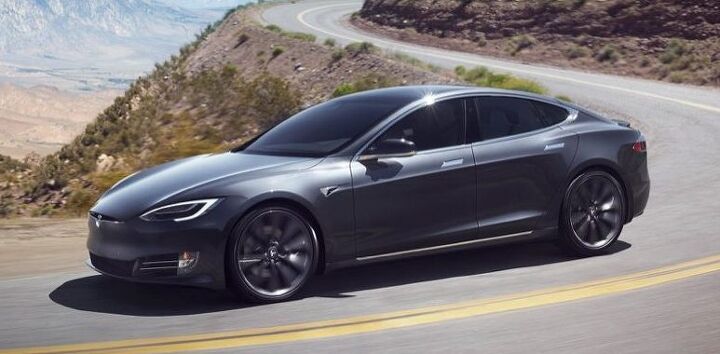
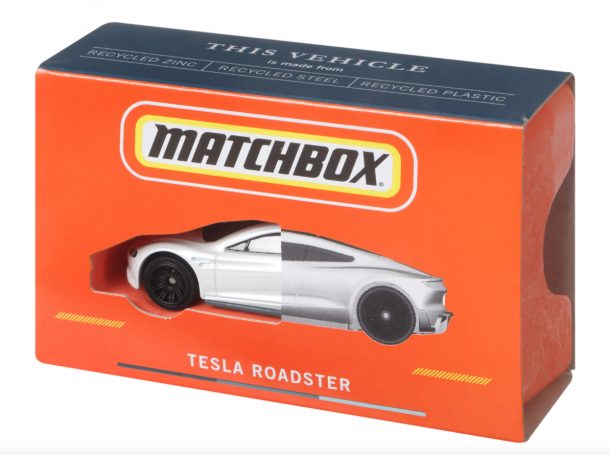

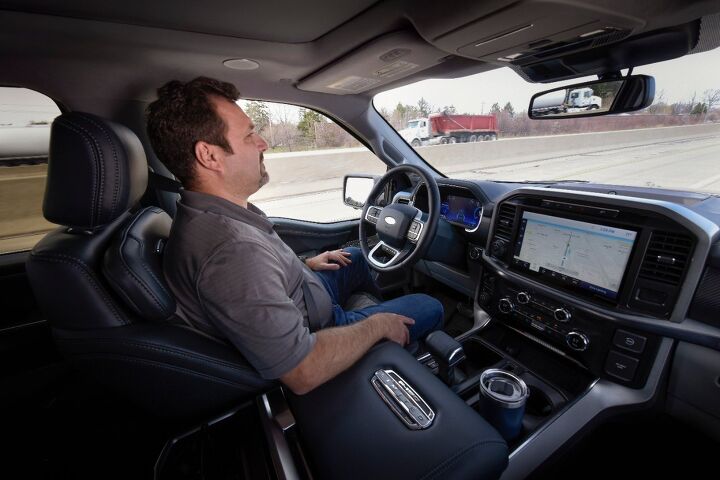
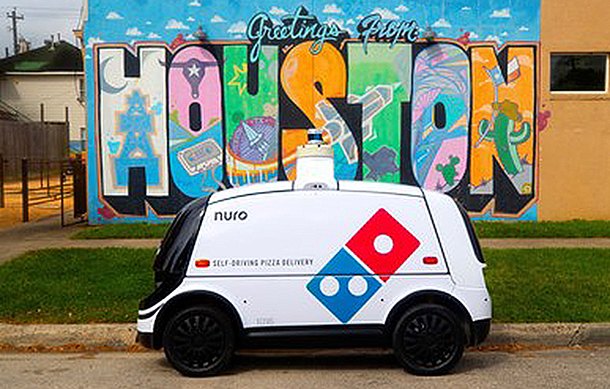

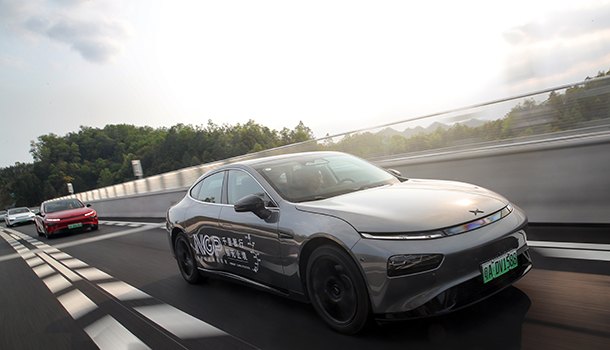
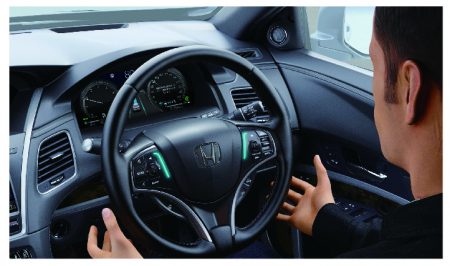





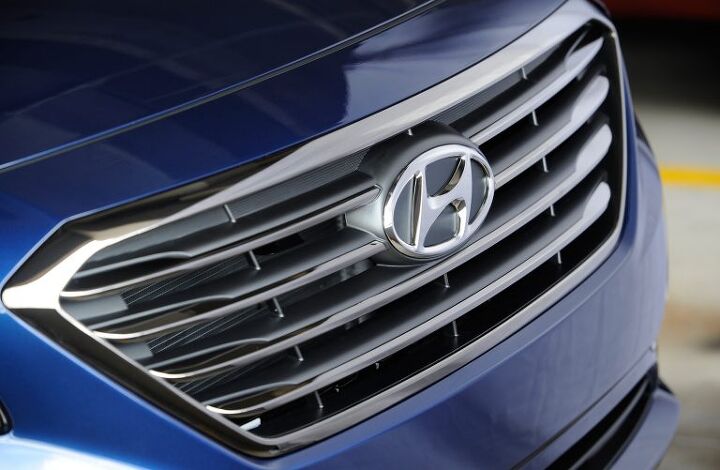


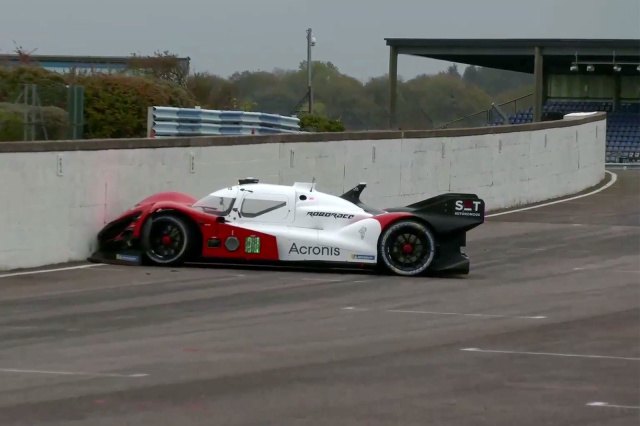
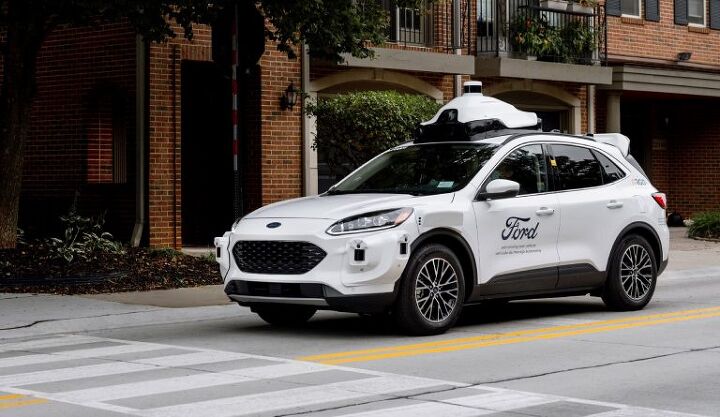







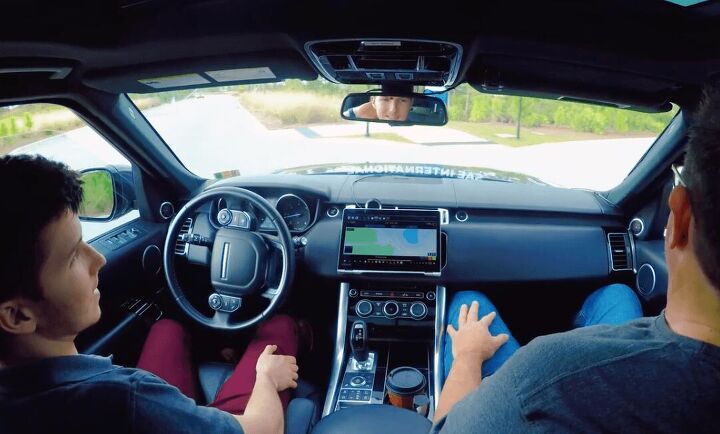




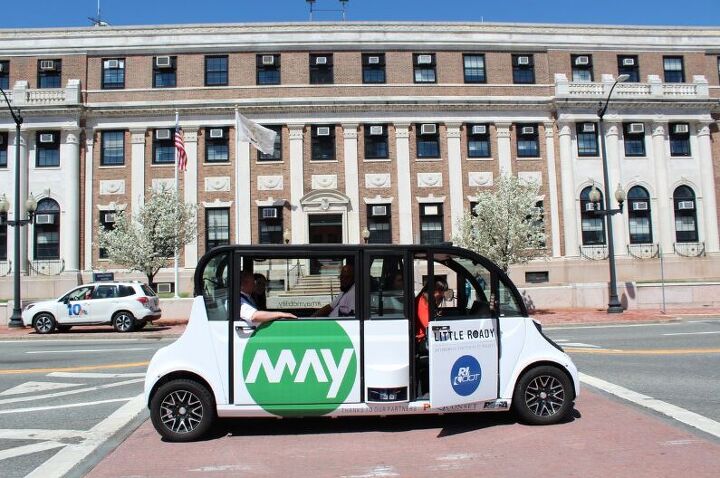



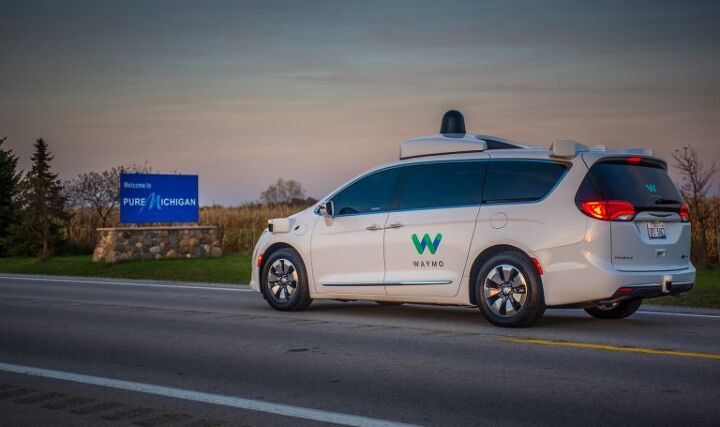



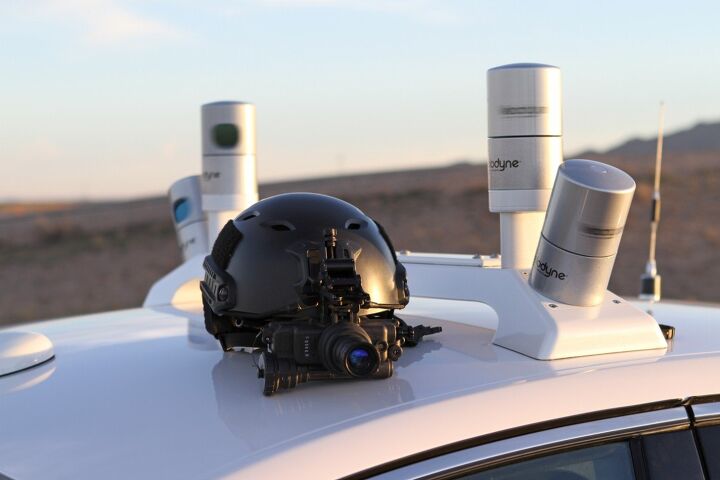



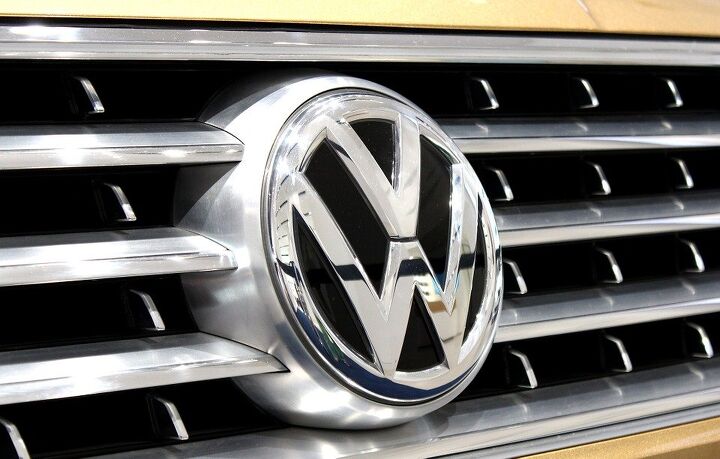


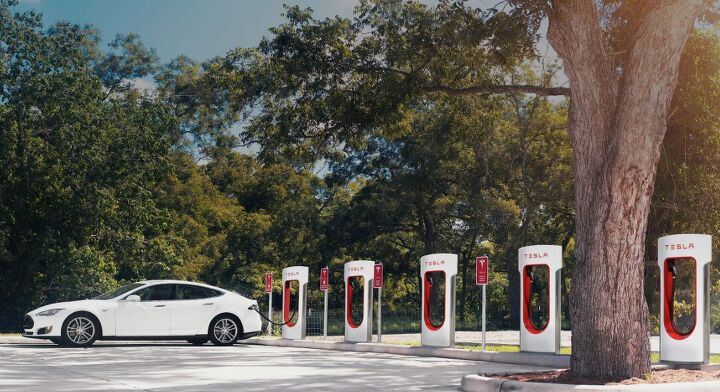


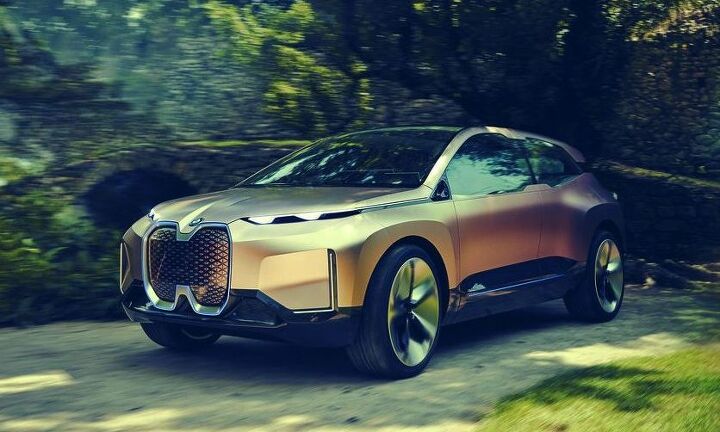
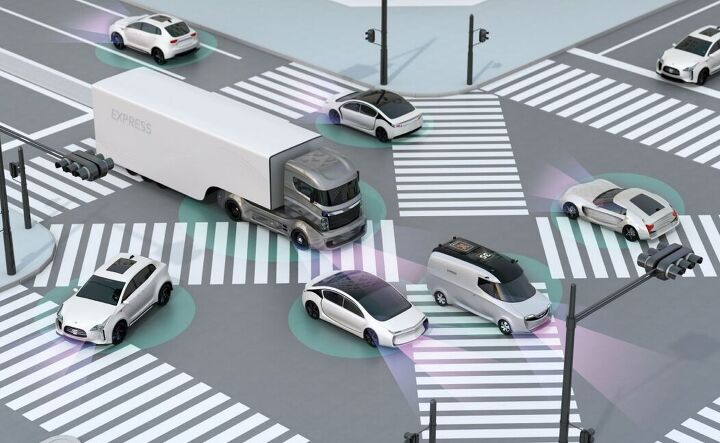

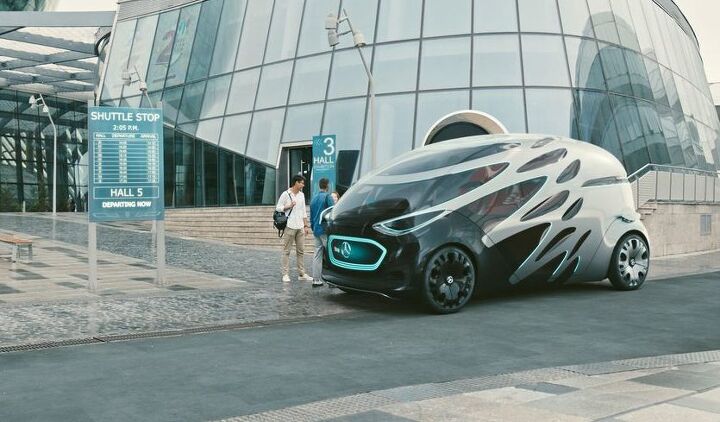
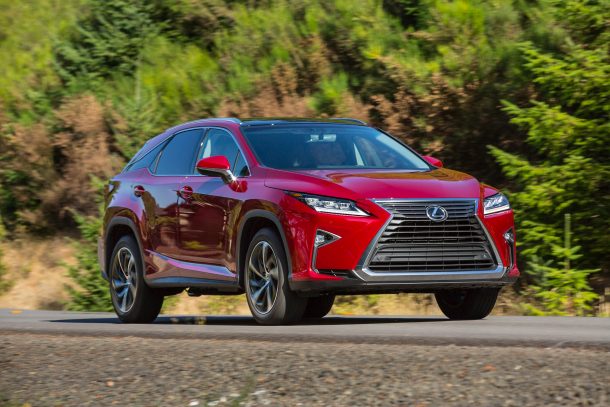












Recent Comments